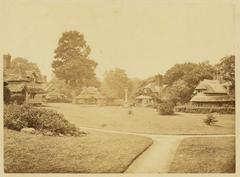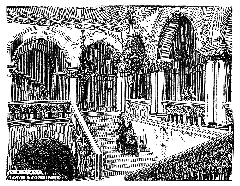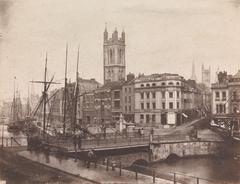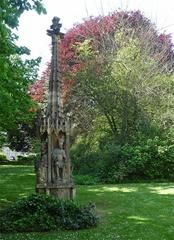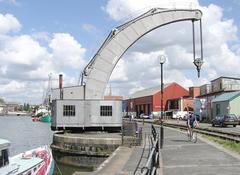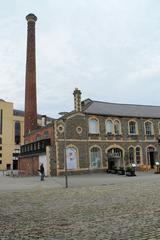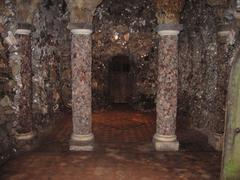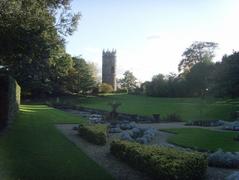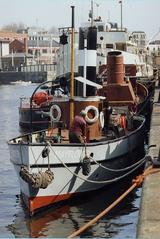Clifton Down Camp: Visiting Hours, Tickets, and Comprehensive Guide to Bristol’s Historic Hillfort
Date: 14/06/2025
Introduction
Perched atop the dramatic limestone cliffs of Clifton Down, Bristol, Clifton Down Camp stands as a living testament to the city’s ancient past. This Iron Age hillfort, dating from around 1000 BCE to 100 CE, invites visitors to traverse its weathered earthworks, enjoy sweeping views over the Avon Gorge, and connect with centuries of layered history. The site’s significance extends from prehistoric settlement through periods of Roman, medieval, and Victorian use, culminating in the present-day parkland protected by the 1861 Clifton Down Act.
Today, Clifton Down Camp blends the intrigue of archaeology with natural splendor, offering open access, scenic trails, and proximity to some of Bristol’s most celebrated landmarks. Whether you are a history enthusiast, nature lover, or casual explorer, this guide consolidates everything you need to know about visiting hours, tickets, accessibility, and nearby attractions. For the most current updates, consult Historic England, Bristol City Council, and Visit Bristol.
Table of Contents
- Historical Overview
- Visitor Information
- Things to Do
- Seasonal Considerations & Travel Tips
- Frequently Asked Questions (FAQs)
- Practical Tips & Responsible Tourism
- Summary & Final Recommendations
- Sources
Historical Overview
Iron Age Origins and Archaeology
Clifton Down Camp is a prominent example of a multivallate Iron Age hillfort, with visible earthwork ramparts encircling Observatory Hill. Its location provided a commanding defensive viewpoint over the Avon Gorge, and archaeological surveys have uncovered pottery, tools, and occasional Roman coins, indicating extended occupation and later reuse (Historic England).
Roman, Medieval, and Victorian Transformations
Although direct Roman structures are scarce, the proximity to Portus Abonae (Sea Mills) suggests the site’s continued strategic relevance. In medieval times, the area shifted towards agriculture and communal gatherings, with the Domesday Book recording its use as pastureland. The English Civil War saw temporary military use, while the Georgian and Victorian periods transformed Clifton Down into a public recreational space. The 1861 Clifton Down Act enshrined the park’s open-access status (Clifton Down Act 1861).
Archaeological Protection and Modern Use
Clifton Down Camp is a scheduled monument, ensuring legal protection of its archaeological features (Historic England). Modern investigations, including geophysical surveys, continue to reveal its historical layers and landscape evolution.
Visitor Information
Visiting Hours & Admission
- Access: Open year-round, 24 hours a day. No formal gates or closing times.
- Admission: Free. No tickets are required for visiting the hillfort or the Downs (Bristol City Council).
- Best Times to Visit: Early mornings and late afternoons offer peaceful experiences and ideal light for photography.
Accessibility
- Paths: The Downs feature wide, mostly level paths suitable for wheelchairs and pushchairs; however, the immediate hillfort area is uneven and can be muddy, especially after rain (Access Guide).
- Facilities: Accessible toilets are located near the Water Tower and Clifton Observatory.
How to Get There
- Public Transport: Buses run frequently to Clifton Down Road; Clifton Down Railway Station is a 15-minute walk away (Merchant Venturers).
- Car: On-street pay-and-display parking is available but limited, especially on weekends and during events.
- Cycling/Walking: Well-marked trails connect the Downs to central Bristol and Clifton Village.
Facilities & Amenities
- Toilets: Public toilets with accessibility features are located near the Water Tower and Observatory.
- Refreshments: Seasonal kiosks and Clifton Observatory Café serve drinks and snacks. Numerous independent cafés and restaurants are just minutes away in Clifton Village (Clifton Village guide).
- Seating: Benches and grassy areas are scattered throughout the park.
- Children’s Areas: Small playgrounds and open fields for recreational activities.
- Dog Walking: Dogs welcome; must be controlled, especially near wildlife and cliff edges.
Things to Do
Guided Tours & Events
- Self-Guided Trails: Downloadable maps and information boards highlight the camp’s history (Clifton Down history trail leaflet).
- Organized Walks: Local history groups and the Clifton Suspension Bridge Trust periodically offer archaeological and natural history tours.
- Annual Events: The Downs host Bristol Pride, music festivals, charity runs, and outdoor theatre. Event details are posted on official and community websites.
Nearby Attractions
- Clifton Suspension Bridge: Five-minute walk; free for pedestrians, with a visitor centre and optional guided or underground vault tours (Clifton Suspension Bridge Trust).
- Clifton Observatory: Historic site with a camera obscura, Giant’s Cave, and café; tickets required (Clifton Observatory).
- Clifton Village: Noted for Georgian architecture, boutique shops, and vibrant café culture.
- Other Historic Sites: Stokeleigh Camp and Burwalls Camp hillforts, Bristol Zoo Gardens, and Cabot Tower are all nearby.
Photographic Spots & Trails
- Best Views: The Sea Wall and Observatory Hill offer panoramic vistas over the Avon Gorge and Suspension Bridge.
- Nature Trails: Themed walks feature wildflowers, birdwatching, and seasonal displays (Bristol City Council).
Seasonal Considerations & Travel Tips
- Spring to Early Autumn: Ideal for wildflowers, mild temperatures, and longer daylight.
- Winter: Quieter but colder and windier; paths may be muddy.
- Weather: Bristol is prone to sudden rain; bring layers and waterproof gear.
- Parking: Arrive early or use public transport to avoid parking congestion.
Frequently Asked Questions (FAQs)
Q: What are the opening hours?
A: Open 24/7, all year round; no closing times.
Q: Is there an entry fee or do I need a ticket?
A: No, admission is free and tickets are not required.
Q: Is the site accessible for wheelchairs?
A: Main paths are accessible, but the hillfort earthworks have uneven terrain. Consult the access guide for details.
Q: Are dogs allowed?
A: Yes, but keep them under control, especially near cliffs and wildlife.
Q: Are there toilet and café facilities?
A: Toilets are available near the Water Tower and Observatory; refreshments can be found at seasonal kiosks and in Clifton Village.
Q: How do I get there by public transport?
A: Multiple bus routes and the nearby Clifton Down Railway Station serve the area.
Q: Are guided tours available?
A: Yes, check local listings and Clifton Suspension Bridge Trust for upcoming walks.
Practical Tips & Responsible Tourism
- Wear sturdy footwear for uneven paths.
- Dress in layers and bring rain protection.
- Download trail maps before visiting.
- Supervise children near cliffs.
- Respect the site: don’t disturb earthworks or pick wildflowers.
- Take litter home; support local businesses in Clifton Village.
- Check event schedules to avoid crowds.
Summary & Final Recommendations
Clifton Down Camp is a remarkable destination where ancient history and natural beauty coexist with vibrant city life. Its Iron Age ramparts, scenic parkland, and proximity to Bristol’s most iconic landmarks make it a perfect spot for both educational and leisure visits. Thanks to free, unrestricted access, comprehensive amenities, and a wealth of nearby attractions, every visitor can tailor their experience.
Enhance your trip by exploring digital resources, joining guided tours, and respecting the unique heritage and ecology of the site. For more information, interactive maps, and event updates, download the Audiala app and follow official sources.
Sources
- Historic England: Clifton Down Camp
- Historic England: Scheduled Monument Entry
- Bristol City Council – The Downs
- Merchant Venturers – Clifton and Durdham Downs
- Clifton Down Act 1861
- Clifton Village guide
- Clifton Suspension Bridge Trust
- Clifton Down history trail leaflet

